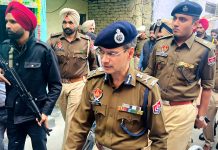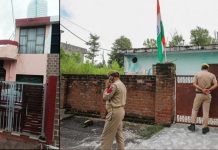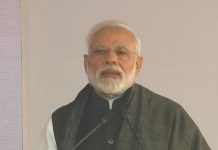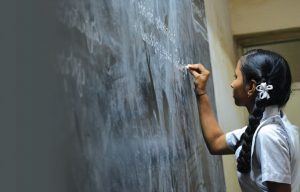 The National Education Policy (NEP) is being finalized and after feedback from all stakeholders is likely to be submitted for approval shortly. The Minister of Human Resource Development (HRD) Ramesh Pokhriyal confirmed this in a written reply in Rajya Sabha on December 5, 2019.
The National Education Policy (NEP) is being finalized and after feedback from all stakeholders is likely to be submitted for approval shortly. The Minister of Human Resource Development (HRD) Ramesh Pokhriyal confirmed this in a written reply in Rajya Sabha on December 5, 2019.
According to the PRS Legislative Research, the Draft Policy has suggested spending 6 per cent of GDP as public investment in education. Significantly, the first National Education Policy (NEP) 1968 had recommended public expenditure in education must be 6 per cent of GDP, which was reiterated by the second NEP in 1986.
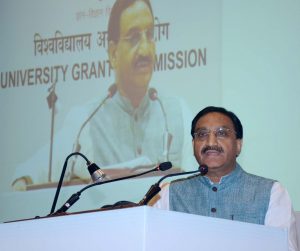 In 2017-18, public expenditure on education in India was 2.7 per cent of GDP. The draft Policy seeks to double the public investment in education from the current 10 per cent of total public expenditure to 20 per cent in the next 10 years. Of the additional 10 per cent expenditure, 5 per cent will be utilized for universities and colleges (higher education), 2 per cent will be utilized for additional teacher costs or resources in school education and 1.4 per cent will be utilized for early childhood care and education.
In 2017-18, public expenditure on education in India was 2.7 per cent of GDP. The draft Policy seeks to double the public investment in education from the current 10 per cent of total public expenditure to 20 per cent in the next 10 years. Of the additional 10 per cent expenditure, 5 per cent will be utilized for universities and colleges (higher education), 2 per cent will be utilized for additional teacher costs or resources in school education and 1.4 per cent will be utilized for early childhood care and education.
The Committee also observed operational problems and leakages in disbursement of funds. For instance, it observed that District Institutes of Education and Training have about 45 per cent vacancies, which have led to their allocations not being used or being used ineffectively. It recommends optimal and timely utilization of funds through the institutional development plans.
While the proposed new education policy is yet to be finalized, to enhance multidisciplinary approach in teaching learning and to sensitize the new generation, Artificial Intelligence has been introduced as a subject in schools across the country from 2019-20. The CBSE has collaborated with several organizations such as Intel, IBM and Microsoft etc for training programmes on Artificial Intelligence.
The Minister also confirmed that “feed back on the Draft National Educational Policy under the Chairmanship of Dr K Kasturirangan had been received from all stakeholders including different ministries and State Governments”. He said that the Draft National Education Policy 2019 is built on the foundational pillars of “Access, Equity, Quality, Affordability and Accountability.” The new policy aims to reduce the content load in the school education curriculum. It also promotes active pedagogy that will focus on the development of core capacities, life skills, including 21st-century skills.
He informed that the schools will be re-organised into school complexes. It also seeks to reduce the content load in the school education curriculum. It also promotes active pedagogy that will focus on the development of core capacities, life skills, including 21st-century skills. He disclosed the policy has been developed by taking into account of almost every voice that is associated with education in the country. We have taken inputs from 1,10,000 gram committees and even received more than 2,00,000 suggestions from public. We are fortunate that everyone so far has applauded the new policy and have supported our efforts.”
The Ministry is implementing a Central Sector Scheme of Pandit Madan Mohan Malaviya National Mission on Teachers and Teaching (PMMMNMTT) which aims at building a strong professional cadre of teachers by setting performance standards and creating top class institutional facilities for innovative teaching and professional development of teachers.
Existing Central, State and Deemed to be Universities/Educational Institutions are approved as centres under the various components of the scheme and teachers in private institutions can also participate in various capacity building programmes as well as induction training.
Further, Annual Refresher Programme in Teaching (ARPIT), a major and unique initiative of online professional development of higher education faculty using the MOOCs platform SWAYAM is being implemented, for which discipline-specific institutions have been identified and notified as National Resource Centres (NRCs), which are tasked to prepare online training material with focus on latest developments in the discipline, new & emerging trends, pedagogical improvements and methodologies for transacting revised curriculum.
In addition, various schemes, namely, Rashtriya Uchchatar Shiksha Abhiyan (RUSA), Global Initiative for Academics Network (GIAN), Technical Education Quality Improvement Programme (TEQIP), are being implemented to improve the quality of teaching in higher education. A number of initiatives are also undertaken by UGC and AICTE for quality improvement of teaching in higher and technical education.
With regard to school education, the recruitment and service conditions of teachers are primarily in the domain of State Governments/UT Administrations. The Central Government through the Centrally Sponsored Scheme of Samagra Shiksha provides assistance to State Governments/UTs for additional teachers to maintain appropriate Pupil Teacher Ratio as per the requirements of the States/UTs. The steps taken by the Central Government to improve teachers’ performance include, inter alia, regular in-service teachers’ training, induction training for newly recruited teachers, academic support for teachers and monitoring teachers’ attendance through School Management Committees/School Management Development Committees/Block Resource Centres/Clusters Resource Centres and encouraging States and UTs to use digital technology like installation of Bio-metric attendance system in schools.
The National Council of Educational Research and Training (NCERT) has developed Performance Indicators for Elementary Education (PINDICS) to track teacher performance and attendance in Government schools. PINDICS have been shared with State Governments/UTs to assess teacher’s performance.
Further, a four year B.Ed integrated course to bring about qualitative improvement in teacher education programmes in India has been conceptualised. The model curriculum prepared for this course includes crucial aspects like Gender, Inclusive education, ICT, Yoga, Global Citizenship Education (GCED) and Health & Sanitation.
The teaching specialization would primarily be for the primary levels and the secondary level. Ministry of Human Resource Development (MHRD) and the National Council for Teacher Education (NCTE) have developed a dedicated digital infrastructure for teachers, DIKSHA, with the aim to empower school teachers of the country with access to innovative tech-based solutions. DIKSHA is a unique initiative that leverages existing, highly scalable and flexible digital infrastructures, around the needs of teachers for effective teaching and administration.
Proposed Policy
According to the PRS Legislative Research, the Committee for Draft National Education Policy chaired by Dr. K.Kasturirangan proposes an education policy, which seeks to address the challenges of access, equity, quality, affordability, and accountability faced by the current education system.
The draft Policy provides for reforms at all levels of education from school to higher education. It seeks to increase the focus on early childhood care, reform the current exam system, strengthen teacher training, and restructure the education regulatory framework. It also seeks to set up a National Education Commission, increase public investment in education, strengthen the use of technology and increase focus on vocational and adult education, among others.
Early education
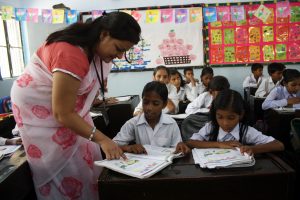 The proposed education policy has observed several quality related deficiencies in the existing early childhood learning programmes. These include curriculum that doesn’t meet the developmental needs of children, lack of qualified and trained teachers, and substandard pedagogy. Currently, most early childhood education is delivered through anganwadis and private-preschools. However, there has been less focus on the educational aspects of early childhood.
The proposed education policy has observed several quality related deficiencies in the existing early childhood learning programmes. These include curriculum that doesn’t meet the developmental needs of children, lack of qualified and trained teachers, and substandard pedagogy. Currently, most early childhood education is delivered through anganwadis and private-preschools. However, there has been less focus on the educational aspects of early childhood.
Hence, the draft Policy recommends developing a two-part curriculum for early childhood care and education. This will consist of guidelines for up to three-year-old children (for parents and teachers), and educational framework for three to eight-year-old children. This would be implemented by improving and expanding the anganwadi system and co-locating anganwadis with primary schools.
Currently, the RTE Act provides for free and compulsory education to all children from the age of six to 14 years. The draft Policy recommends extending the ambit of the RTE Act to include early childhood education and secondary school education.
This would extend the coverage of the Act to all children between the ages of three to 18 years. In addition, the draft Policy recommends that the recent amendments to the RTE Act on continuous and comprehensive evaluation and the no detention policy must be reviewed. It states that there should be no detention of children till class eight. Instead, schools must ensure that children are achieving age-appropriate learning levels.
The current structure of school education must be restructured on the basis of the development needs of students. This would consist of a 5-3-3-4 design comprising five years of foundational stage (three years of pre-primary school and classes one and two), three years of preparatory stage (classes three to five), three years of middle stage (classes six to eight), and four years of secondary stage (classes nine to 12). The Committee noted that the current education system solely focuses on rote learning of facts and procedures. Hence, it recommends that the curriculum load in each subject should be reduced to its essential core content. This would make space for holistic, discussion and analysis-based learning.
The Committee noted that the current board examinations force students to concentrate only on a few subjects, do not test learning in a formative manner, and cause stress among students. To track students’ progress throughout their school experience, the draft Policy proposes State Census Examinations in classes three, five and eight. Further, it recommends restructuring the board examinations to test only core concepts, skills and higher order capacities.
These board examinations will be on a range of subjects. The students can choose their subjects, and the semester when they want to take these board exams. The in-school final examinations may be replaced by these board examinations. The Committee noted that establishing primary schools in every habitation across the country has helped increase access to education. However, it has led to the development of very small schools (having low number of students). The small size of schools makes it operationally complex to deploy teachers and critical physical resources.
The draft Policy recommends that multiple public schools should be brought together to form a school complex. A complex will consist of one secondary school (classes nine to twelve) and all the public schools in its neighbourhood that offer education from pre-primary till class eight. The school complexes will also include anganwadis, vocational education facilities, and an adult education centre. Each school complex will be a semi-autonomous unit providing integrated education across all stages from early childhood to secondary education. This will ensure that resources such as infrastructure and trained teachers can be efficiently shared across a school complex.
Tenure of teachers
The Committee noted that there has been a steep rise in teacher shortage, lack of professionally qualified teachers, and deployment of teachers for non-educational purposes. The draft Policy recommends that teachers should be deployed with a particular school complex for at least five to seven years. Further, teachers will not be allowed to participate in any non-teaching activities (such as cooking mid-day meals or participating in vaccination campaigns) during school hours that could affect their teaching capacities.
For teacher training, the existing B.Ed. programme will be replaced by a four-year integrated B.Ed. programme that combines high-quality content, pedagogy, and practical training. An integrated continuous professional development will also be developed for all subjects. Teachers will be required to complete a minimum of 50 hours of continuous professional development training every year.
The draft Policy recommends separating the regulation of schools from aspects such as policymaking, school operations, and academic development. It suggests creating an independent State School Regulatory Authority for each state that will prescribe basic uniform standards for public and private schools. The Department of Education of the State will formulate policy and conduct monitoring and supervision.
Higher education
 According to the All India Survey on Higher Education, the Gross Enrolment Ratio (GER) in higher education in India has increased from 20.8 per cent in 2011-12 to 25.8 per cent in 2017-18. The Committee identified lack of access as a major reason behind low intake of higher education in the country. It aims to increase GER to 50 per cent by 2035 from the current level of about 25.8 per cent.
According to the All India Survey on Higher Education, the Gross Enrolment Ratio (GER) in higher education in India has increased from 20.8 per cent in 2011-12 to 25.8 per cent in 2017-18. The Committee identified lack of access as a major reason behind low intake of higher education in the country. It aims to increase GER to 50 per cent by 2035 from the current level of about 25.8 per cent.
The Committee noted that the current higher education system has multiple regulators with overlapping mandates. This reduces the autonomy of higher educational institutions and creates an environment of dependency and centralized decision making. Therefore, it proposes setting up the National Higher Education Regulatory Authority (NHERA).
This independent authority would replace the existing individual regulators in higher education, including professional and vocational education. This implies that the role of all professional councils such as AICTE and the Bar Council of India would be limited to setting standards for professional practice. The role of the University Grants Commission (UGC) will be limited to providing grants to higher educational institutions.
Currently, the National Assessment and Accreditation Council (NAAC) is an accreditation body under the UGC. The draft Policy recommends separating NAAC from the UGC into an independent and autonomous body. In its new role, NAAC will function as the top-level accreditor, and will issue licenses to different accreditation institutions, who will assess higher educational institutions once every five to seven years. All existing higher education institutions should be accredited by 2030. Currently, higher educational institutions can only be set up by Parliament or state legislatures.
The draft Policy proposes that these institutions could be allowed to be set up through a Higher Education Institution Charter from NHERA. This Charter will be awarded on the basis of transparent assessment of certain specified criteria. All such newly constituted higher educational institutions must receive accreditation as mandated by NHERA within five years of being established.
The committee has recommended that higher education institutions should be restructured into three types: (i) research universities focusing equally on research and teaching; (ii) teaching universities focusing primarily on teaching; and (iii) colleges focusing only on teaching at undergraduate levels. All such institutions will gradually move towards full autonomy — academic, administrative, and financial.
Focus on research
The Committee observed that the total investment on research and innovation in India has declined from 0.84 per cent of GDP in 2008 to 0.69 per cent in 2014. India also lags behind many nations in number of researchers (per lakh population), patents and publications.
The draft Policy recommends establishing a National Research Foundation, an autonomous body, for funding, mentoring and building the capacity for quality research in India. The Foundation will consist of four major divisions: sciences, technology, social sciences, and arts and humanities, with the provision to add additional divisions. The Foundation will be provided with an annual grant of 20,000 crores (0.1 per cent of GDP).
The draft Policy recommends making undergraduate programmes interdisciplinary by redesigning their curriculum to include a common core curriculum and one or two areas of specialization. Students will be required to choose an area of specialization as ‘major’, and an optional area as ‘minor’.
A four-year undergraduate programmes in Liberal Arts will be introduced and multiple exit options with appropriate certification will be made available to students. Further, within the next five years, five Indian Institute of Liberal Arts must be setup as model multidisciplinary liberal arts institutions.
Faculty motivation
The Committee observed that poor service conditions and heavy teaching loads at higher education institutions have resulted in low faculty motivation. Further, lack of autonomy and no clear career progression system are also major impediments to faculty motivation. The draft Policy recommends development of a Continuous Professional Development programme and introduction of a permanent employment (tenure) track system for faculty in all higher education institutions by 2030. Further, a desirable student-teacher ratio of not more than 30:1 must be ensured.
The Committee observed that the curricula remain rigid, narrow, and archaic. Moreover, the faculty often lacks the autonomy to design curricula, which negatively impacts pedagogy. It recommends that all higher education institutions must have complete autonomy on curricular, pedagogical and resource-related matters.
Education governance
The Committee observed that there is a need to revisit the existing system of governance in education, and bring in synergy and coordination among the different ministries, departments and agencies. It has recommended creation of a National Education Commission or Rashtriya Shiksha Aayog, as an apex body for education, to be headed by the Prime Minister.
This body will be responsible for developing, implementing, evaluating, and revising the vision of education in the country on a continuous and sustained basis. It will oversee the implementation and functioning of several bodies including the National Council of Educational Research and Training (NCERT), the proposed National Higher Education Regulatory Authority, and National Research Foundation.
It has also suggested that the Ministry of Human Resources and Development must be renamed as the Ministry of Education in order to bring focus back on education.
Financing Education
The Draft Policy reaffirmed the commitment of spending 6 per cent of GDP as public investment in education. Note that the first National Education Policy (NEP) 1968 had recommended public expenditure in education must be 6 per cent of GDP, which was reiterated by the second NEP in 1986. In 2017-18, public expenditure on education in India was 2.7 per cent of GDP.
The draft Policy seeks to double the public investment in education from the current 10 per cent of total public expenditure to 20 per cent in the next 10 years. Of the additional 10 per cent expenditure, 5 per cent will be utilized for universities and colleges (higher education), 2 per cent will be utilized for additional teacher costs or resources in school education and 1.4 per cent will be utilized for early childhood care and education.
The Committee also observed operational problems and leakages in disbursement of funds. For instance, it observed that District Institutes of Education and Training have about 45 per cent vacancies, which have led to their allocations not being used or being used ineffectively. It recommends optimal and timely utilization of funds through the institutional development plans.
Technology in Education
The Committee has observed that technology plays an important role in improving the classroom process of teaching, learning and evaluation, aiding in preparation of teachers and continuous professional development of teachers, improving access to education in remote areas and for disadvantaged groups, and improving the overall planning, administration and management of the entire education system. It recommends focused electrification of all educational institutions, as electricity is a pre-requisite for all technology-based interventions.
Further, it recommends setting up of a National Mission on Education through Information and Communication Technology. The Mission will encompass virtual laboratories that provide remote access to laboratories in various disciplines. A National Education Technology Forum will also be setup under the Mission, as an autonomous body, to facilitate decision-making on the induction, deployment and use of technology.
This Forum will provide evidence-based advice to central and state-governments on technology-based interventions. A National Repository will be setup to maintain all records related to institutions, teachers, and students in digital form. Further, a single online digital repository will be created where copyright-free educational resources will be made available in multiple languages.
Vocational Education
The Committee has observed that less than 5 per cent of the workforce in the age-group of 19-24 receives vocational education in India. This is in contrast to 52 per cent in the USA, 75 per cent in Germany and 96 per cent in South Korea. It recommends integrating vocational educational programmes in all educational institutions (schools, colleges and universities) in a phased manner over a period of 10 years.
Key recommendations in this regard suggest that all school students must receive vocational education in at least one vocation in grades nine to 12. The proposed school complexes must build expertise in curriculum delivery that is aligned to the competency levels under the existing National Skills Qualifications Framework.
The proposed Higher Education Institutions must also offer vocational courses that are integrated into the undergraduate education programmes. The draft Policy targets to offer vocational education to up to 50 per cent of the total enrolment in higher education institutions by 2025, up from the present level of enrolment of well below 10 per cent in these institutions.
The panel has recommended a national committee for integration of vocational education. The Committee will be set up to work out the steps that need to be taken towards achieving the above goals. A separate fund will be setup for the integration of vocational education into educational institutions. The Committee will work out the modalities for the disbursement of these funds.
Adult Education
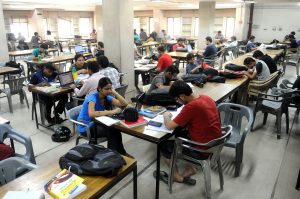 As per Census 2011, India still had over 3.26 crore youth non-literates (15-24 years of age) and a total of 26.5 crore adult non-literates (15 years and above). In this regard, the draft Policy recommends establishing an autonomous Central Institute of Adult Education, as a constituent unit of NCERT, which will develop a National Curriculum Framework for adult education.
As per Census 2011, India still had over 3.26 crore youth non-literates (15-24 years of age) and a total of 26.5 crore adult non-literates (15 years and above). In this regard, the draft Policy recommends establishing an autonomous Central Institute of Adult Education, as a constituent unit of NCERT, which will develop a National Curriculum Framework for adult education.
The Framework will cover five broad areas: foundational literacy and numeracy, critical life skills vocational skills development, basic education, and continuing education. Adult Education Centres will be included within the proposed school complexes. Relevant courses for youth and adults will be made available at the National Institute of Open Schooling. A cadre of adult education instructors and managers, as well as a team of one-on-one tutors will be created through a newly established National Adult Tutors Programme.
To promote languages
The Committee observed that a large number of students are falling behind since classes in schools are being conducted in a language that they do not understand. Therefore, it recommended that the medium of instruction must either be the home language/mother tongue/local language till grade five, and preferable till grade eight, wherever possible.
Introduced by the first National Education Policy, the three-language formula stated that state governments should adopt and implement study of a modern Indian language, preferably one of the southern languages, apart from Hindi and English in the Hindi-speaking states, and of Hindi along with the regional language and English in the non-Hindi speaking states. The draft Policy recommended that this three language formula be continued and flexibility in the implementation of the formula should be provided.
The Committee remarked that the implementation of the formula needs to be strengthened, particularly in Hindi-speaking states. Further, schools in Hindi speaking areas should also teach Indian languages from other parts of India for the purpose of national integration. To provide flexibility in the choice of language, students who wish to change one or more of their three languages may do so in grade six or grade seven, subjected to the condition that they are still able to demonstrate proficiency in three languages in their modular board examinations.
To promote Indian languages, a National Institute for Pali, Persian and Prakrit will be set up. All higher education institutes must recruit high quality faculty for at least three Indian languages, in addition to the local Indian language. Further, the mandate of the Commission for Scientific and Technical Terminology will be expanded to include all fields and disciplines to strengthen vocabulary in Indian languages.
letters@tehelka.com







